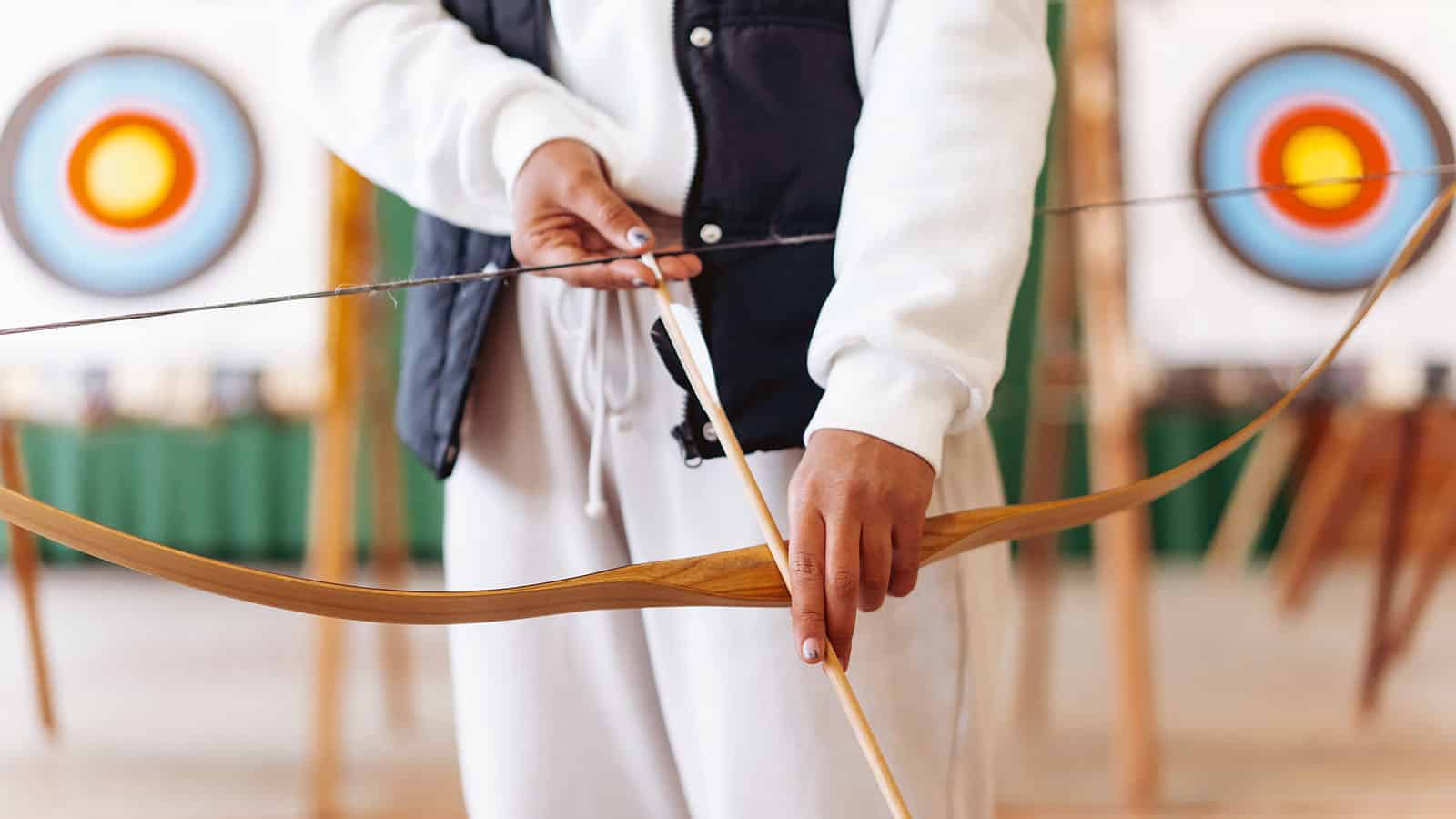If you’re new to archery, you’ll quickly learn that the equipment may need to be clearer and simpler. This will undoubtedly dawn on you when attempting to purchase your first bow.
You’ll discover that the more intricate things are, the more you notice them. It might be confusing to choose from all the many bow models, draw weights, and draw lengths, as well as rests, sights, releases, arrows, and other accessories. But don’t worry.
There are plenty of specifics you don’t need to instantly get hung up on. However, you’ll probably note that there are several bow types at any nearby archery shop. There are several subcategories, but we’ll be comparing two types of bows: recurves and compound bows.
What is A Recurve Bow?
Recurve bows are quite easy to use. From the riser, their limbs bend in the direction of the archer, but as you get closer to the tip, they start to curve away. Compared to a longbow, this limb design boosts arrow speed, making it a fantastic choice for shooters with lighter draw weights.
The usage of a draw stop is a key distinction between a recurve and compound bow. Compound shooters have consistently pulled to full draw at a draw stop.
Recurve archers must draw consistently to the same spot each time since they lack this feature. As a result, you will struggle greatly to fire accurately if your anchor point is inconsistent.
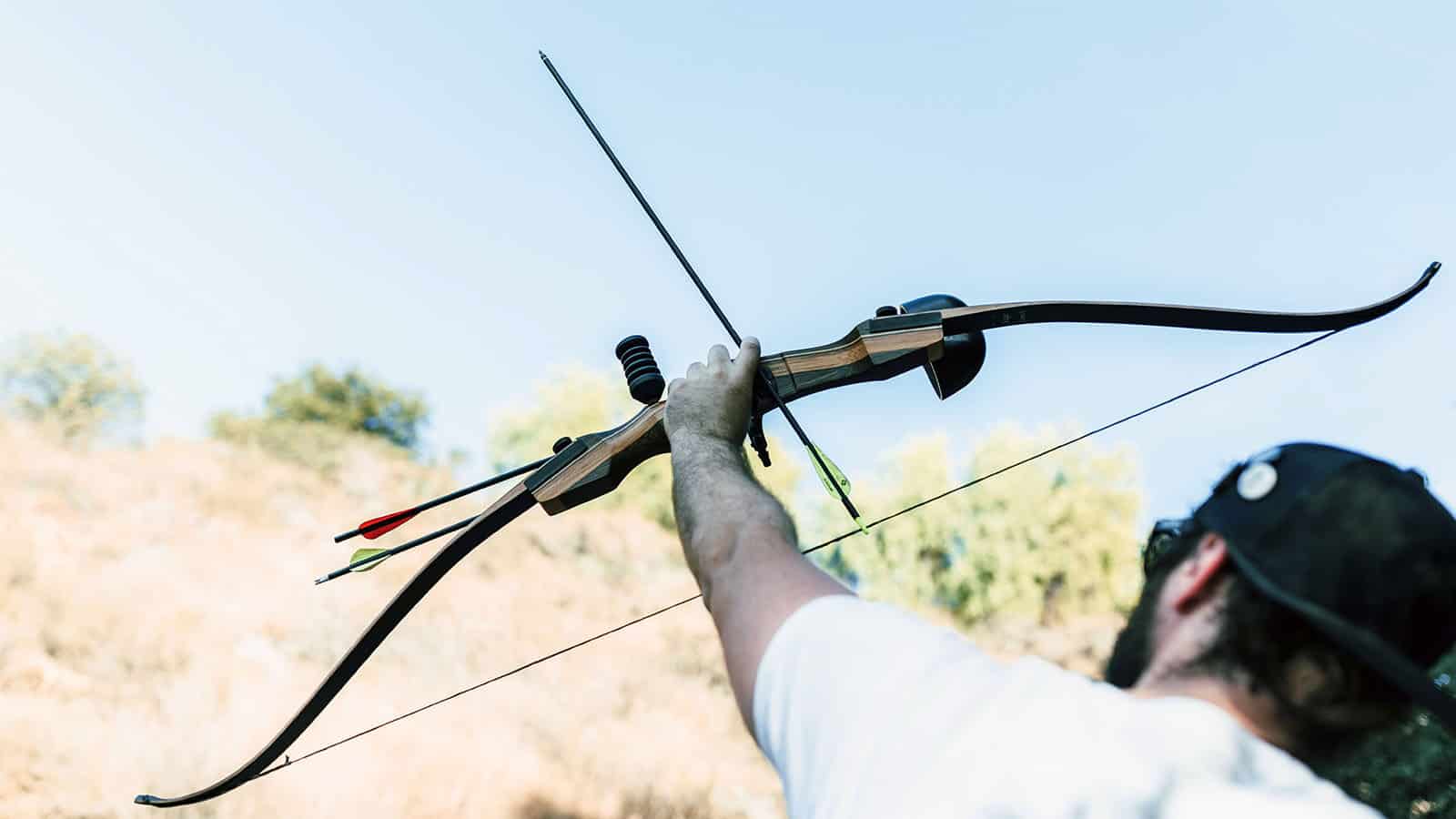
Check out this Recurve Bow if you consider buying one.
Pros:
Recurve bows often have greater power than longbows, which results in a faster shooting. The enhanced shooting power is supported by the form of the bow, which has a characteristic hook at the end of each limb and resembles the shape of the number 3.
Recurve bows are a popular choice for beginning archers due to their simplicity. These are Recurve bows further advantages;
- Lightweight
- easily maintained
- Less technical
- classic sportsmanship
- Affordable
Cons:
Recurve bows’ lack of current technology is its biggest drawback. And due to the difficulty of maintaining accuracy at greater distances, many recurve archers choose to fire at closer ranges. These are Recurve bows further disadvantages;
- Drawing and holding need a lot of strength
- Accuracy is challenging at a distance
What is A Compound Bow?
Compound bows are simpler to shoot consistently since every shot requires the same drawing force because of compounds’ pre-set draw stops. And Compound bow users are aware of how important consistency is for greater levels of accuracy.
Furthermore, compound archers may pick whatever release method they choose as well. However, while most compound archers prefer mechanical release aids, fingers are also possible.
Both release methods have advantages and disadvantages, but they all improve consistency and lessen the chance of human mistakes after release.
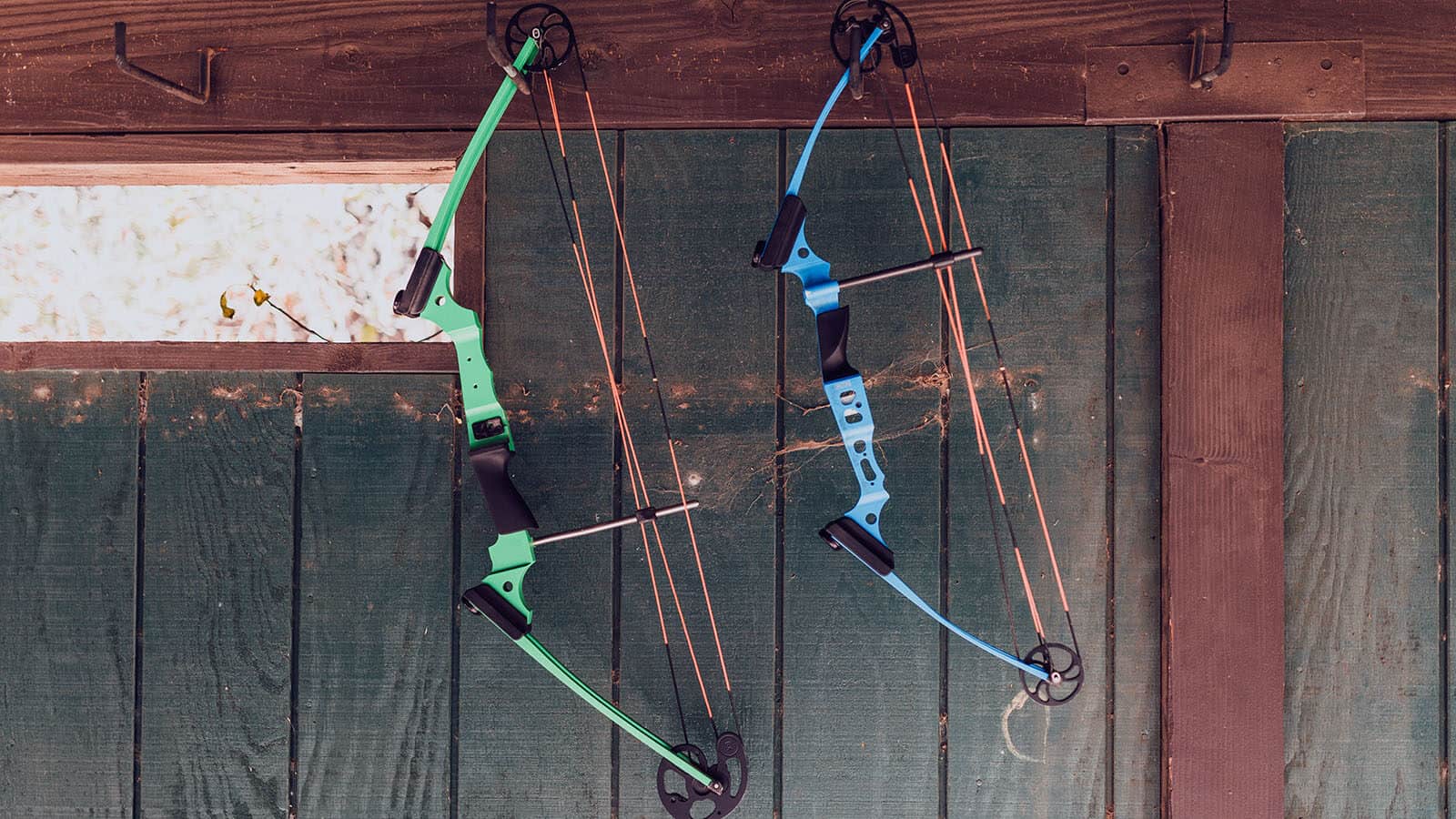
Go for this Compound Bow if you’re drawn to one.
Pros:
Modern, quick, and powerful compound bows are available. So, with the help of its levering mechanism, you may fire heavy compound bows while just retaining a small portion of their true weight.
This is called “let-off” and can reduce the overall draw weight by between 65% and 90%.
These are Compound bows further advantages;
- At full draw, let-off lessens holding weight
- greater accuracy
- Increased power
- supports precision over a long distance
- Customizable
Cons:
Because compound bows are modern in construction, they might not be the best option for archers who prefer the traditional components of the sport. And knowing how to properly handle and care for a compound bow takes some time.
The bow alone takes practice to master, and any extra equipment you choose to employ will have its learning curve.
Another drawback is that you can’t just go out, get a compound bow, and start shooting. You will also need a suitable arrow rest, a release aid, a bow sight, and peep sight, a bow stabilizer, and other accessories.
These are Compound bows further disadvantages;
- Heavy
- Need more maintenance
- You must adjust the bow to meet your demands
- Expensive
The Difference Between Compound Bow And Recurve Bow
Compound bows and recurve bows are widely used, and have some similarities but here is a summary of the fundamental distinctions between compound and recurve bow to help you make a better decision.
Size
In general, a compound bow is MUCH smaller and has the same power as a recurve. From limb tip to limb tip, a 70 lb compound will normally measure between 30 and 32 inches.
You should expect a recurve of the same strength to measure between 60 and 64 inches from tip to tip. Essentially, the recurve bow doubles the size of a compound bow.
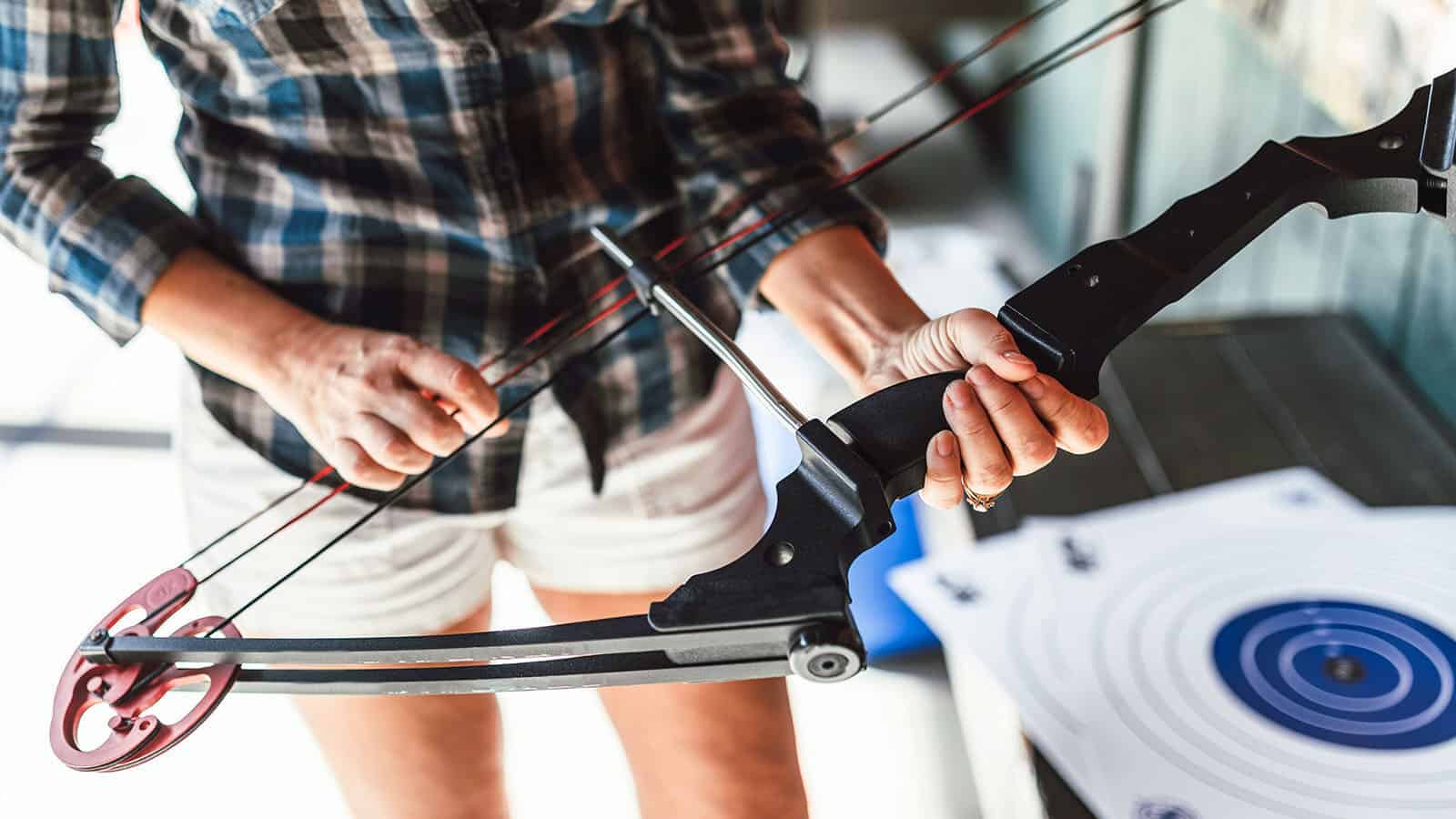
Verdict: Compound bows win as they are generally smaller than recurves.
Range
Recurve bows are less powerful than compound bows. Because the cables on compound bows are linked to the bow’s extremities rather than its center, unlike those on recurve bows, they are more accurate than recurve bows.
Furthermore, compound bow cables work as a spring- storing energy that is subsequently released when the string is pulled back. As a result, you may now shoot arrows quicker and further, thanks to the bow’s increased strength.
Verdict: Compound bow wins this round. Compound bows have a larger range than recurve now.
Design
A compound bow can be the best option if you want current technology and don’t like the old, traditional way of archery. The cables and pulley system on a bow is only a few decades old, and technology is constantly improving.
The only distinct design of the recurve bow is its points, which curve away from the archer when the bow is not strung.
However, compound bows are the only type of archery to use if you want a contemporary approach.
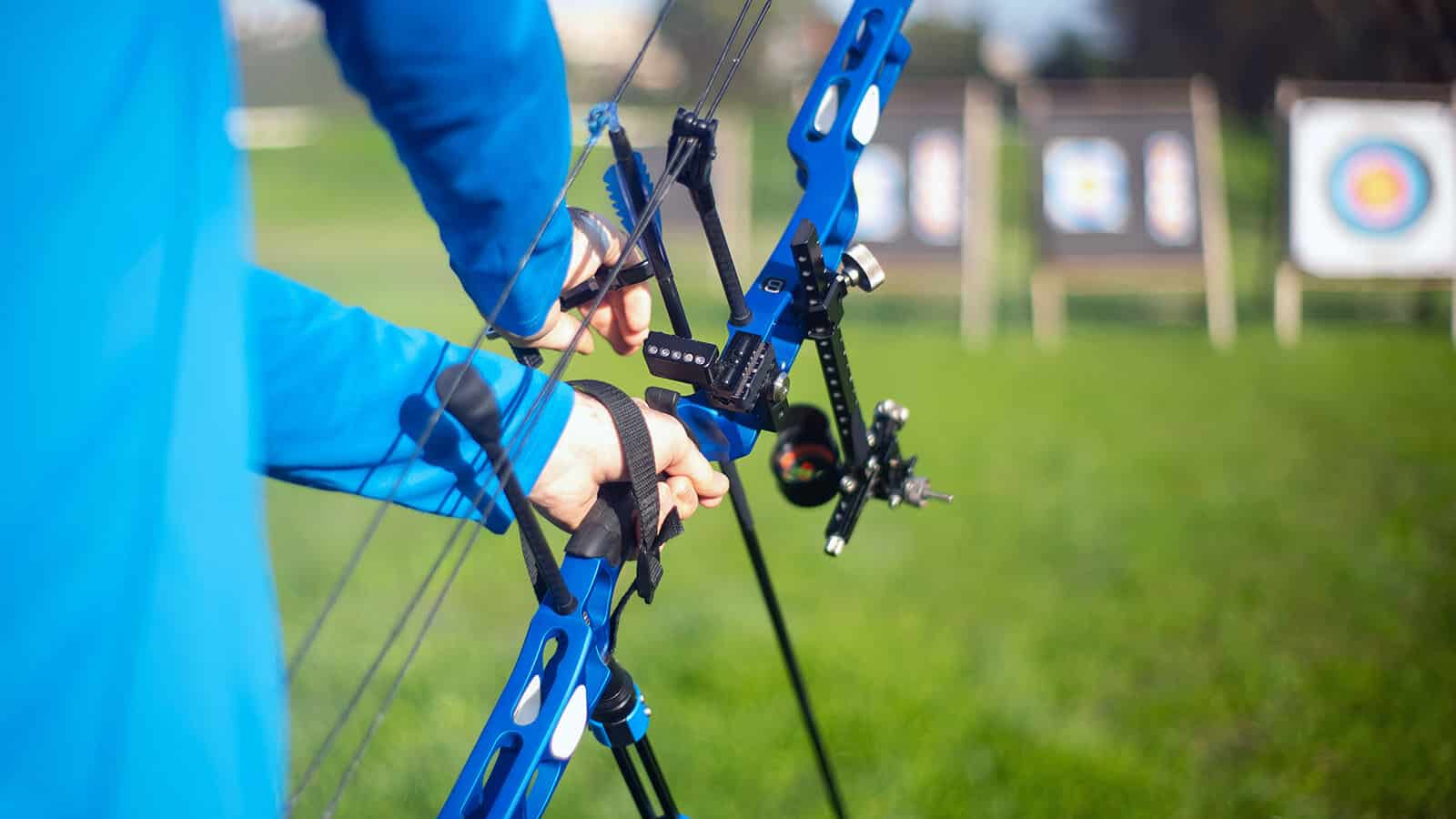
Verdict: Compound bow wins. If you are looking for something stylish then this is it.
Easy to use
The Recurve bow’s design is fairly straightforward because it is manufactured from a single piece of wood. As a result, the design is straightforward yet efficient, and there are no wires or pulleys to worry about.
Compound bows, on the other hand, are more challenging to operate because of their numerous moving components, cables, and pulleys.
So, why is a Recurve bow better? Recurve bows have significantly simpler designs than compound bows since they don’t have any of these moving pieces. Recurves have been used for hunting since the dawn of time and are being utilized today by seasoned hunters and people from many different cultures.
Verdict: Recurve wins this round. As early stated, recurve bow’s design is fairly straightforward to use.
Noise
This one is difficult to predict. Both limb dampeners and string silencers may be installed on a compound or recurve to reduce the noise of a shot.
You should expect both bows to be silent if your bow is correctly tuned and you’re shooting an arrow that is precisely the perfect weight for the strength of your bow.
Verdict: It’s a tie between both.
Portable
Thanks to its short form, holding the compound bow steadily in your hand is easier. This is particularly advantageous for those just starting to shoot a bow.
On the other hand, Recurve bows are more difficult for beginning archers to manage since they are longer and heavier than compound bows.
The form of the best compound bow also makes it simpler to draw the string back, reducing the tension on your muscles when firing arrows.
However, a recurve bow’s bigger grip might be challenging for younger kids or those with smaller hands.
Verdict: Compound bow wins again. If you are looking for a bow you can easily carry along then you should go for a compound bow.
Energy
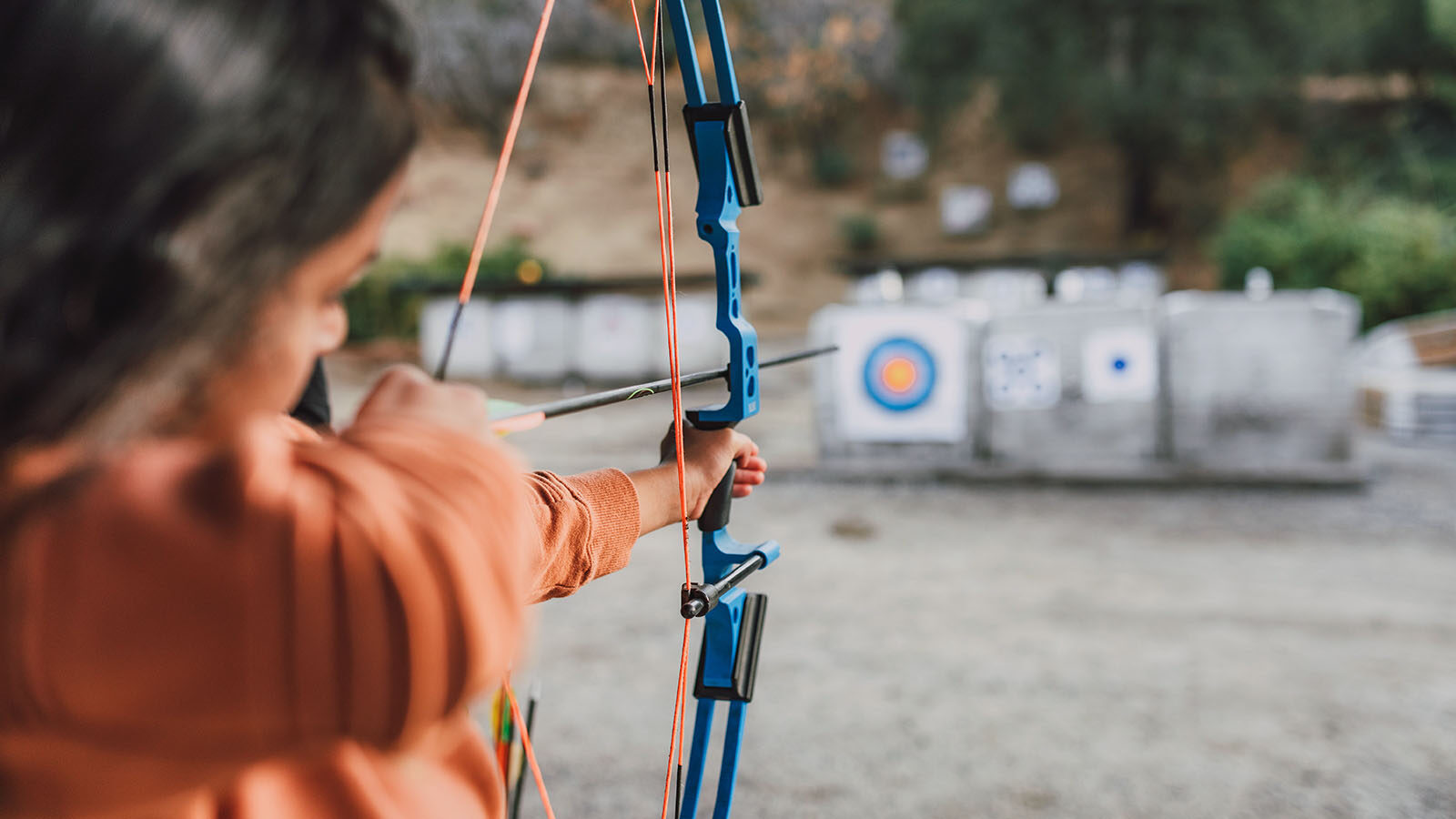
Recurve and compound bows use the same amount of energy, but they do it in different ways. Recurve bow strings are composed of a single piece of material.
However, for compound bows, some of the force you put on the string is used to move the pulleys while the remaining force is used to drive your arrow. And the fundamental benefit of this design is that it enables archers to draw back less while storing more energy in their bows.
So, the best recurve bow may have a straightforward design but that doesn’t make it simple to fire precisely. You need strength, superb form, and the right shooting technique to succeed as a recurve archer.
Verdict: Compound wins! You need little energy to shoot with a compound bow.
Price
You can get a decent mid-range recurve bow for half the price of a reputable compound bow.
The creation of a compound bow involves more than just building. It has more moving components, more complicated construction, and more technical transport. While the recurve maintains things basic and is more economical.
Verdict: Recurve bow wins.
Best For Beginners
Due to its straightforward construction and limitless draw length options, recurve bows are often the first type of bow that young starting archers are taught to use.
Recurve bows are also more affordable and simpler to tune, maintain, and transport. Additionally, they are sturdy, silent, and light. Finally, Recurve bows provide the archer with a lot more input, making it simpler to identify and fix form and technique errors.
However, a compound bow offers all the advantages of contemporary design and materials, enabling unrivaled power, speed, and accuracy. Also, they may be completely customized and are compatible with a wide range of attachments, which improves stability, consistency, and shoot ability even further.
Thanks to cams and cables that assist in maintaining the weight of the string, they make it possible for almost everyone to try bowhunting.
Verdict: Recurve wins. It’s easier for beginners to use recurves than compound bows.
Deciding Between A Recurve Vs Compound Bow

A timeless classical bow style is the recurve bow. This bow type enables the traditional shooting, whether you want a vintage wooden recurve bow or a contemporary one made of metals, fiberglass, and/or carbon.
Recurve bows are a common option for archers looking for a straightforward bow that gives them alternatives because they frequently appear in Hollywood films.
However, a contemporary bow option is a compound bow. This bow type enables strong, precise, long-distance shooting whether you utilize many bow accessories or relatively few.
Compound bows are a common bow choice for archers who seek a technological bow that allows them more precision and force while shooting at a distance. They are also frequently featured in Hollywood films.
So, when selecting all types of bows for competitive purposes, be aware that recurve and compound bows are acceptable in various archery competitions. However, the only bow you should have if you’re an archer in the Olympics is a recurve bow.
Compound bows are not currently permitted in the Olympics, although that might change.
Nevertheless, be careful to research the minimum draw weight requirements in your state if you’re considering buying a bow for hunting.
Draw weight requirements typically call for at least 35 pounds. Hunting with recurve bows frequently involves drawing weights between 40 and 50 pounds. While hunting with compound bows frequently uses draw weights of between 50 and 70 pounds.
Conclusion

After comparing recurve and compound bows, you now have the information necessary to decide which bow is best for you.
Although recurve bows are the most common choice for novices, to begin with, owing to their simplicity, compound bows are still a fantastic choice! Choose a bow that best compliments your shooting style by trusting your intuition.
The easiest way to determine which is ideal is to visit your neighborhood professional archery store, take a few classes, try out a few different bows, and then determine which style inspires you.
The ideal bow for you is ultimately the one that you like shooting the most.
